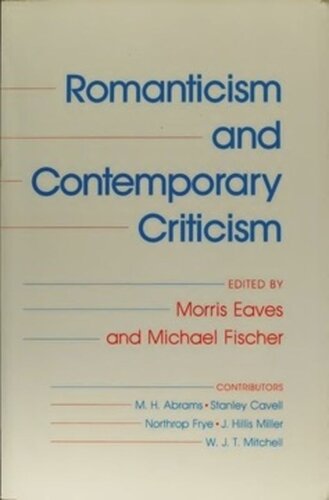

Most ebook files are in PDF format, so you can easily read them using various software such as Foxit Reader or directly on the Google Chrome browser.
Some ebook files are released by publishers in other formats such as .awz, .mobi, .epub, .fb2, etc. You may need to install specific software to read these formats on mobile/PC, such as Calibre.
Please read the tutorial at this link: https://ebookbell.com/faq
We offer FREE conversion to the popular formats you request; however, this may take some time. Therefore, right after payment, please email us, and we will try to provide the service as quickly as possible.
For some exceptional file formats or broken links (if any), please refrain from opening any disputes. Instead, email us first, and we will try to assist within a maximum of 6 hours.
EbookBell Team

4.1
30 reviewsThe core of this book is made up of five essays, by distinguished scholars of international reputation, that treat the relation between current literary theory and Romanticism. The book originated in a series of lectures presented at the University of New Mexico in 1983. All but one of the essays are published here for the first time.
The contributors are Northrop Frye, W. J. T. Mitchell, J. Hillis Miller, M. H. Abrams, and Stanley Cavell. Frye's essay is a major statement on the backgrounds of Romanticism. W. J. T. Mitchell's contribution takes up, through the composite arts of William Blake, the relation of poetry and painting, writing and printing, criticism and politics. The controversy over deconstruction is the occasion for a matched pair of essays by J. Hillis Miller and M. H. Abrams, advocate and antagonist respectively. In his essay, Abrams makes a definitive statement on his view of deconstruction and its intellectual heritage. The fifth piece, by Stanley Cavell, is the first extended discussion of English and American Romanticism by this major contemporary philosopher. Following each essay is an edited transcript of a question-and-answer session in which the contributor-critic ranges widely and freely over today's critical scene. The sessions make fascinating reading.
This book should be of compelJing interest to students of Romanticism as well as to students and scholars interested in the uses and implications of poststructuralist theory.